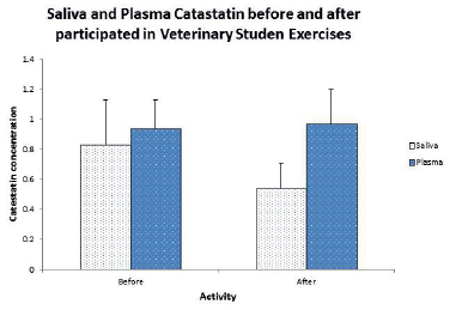Plasma and Saliva Catestatin Concentrations as Possible Markers for Stress in Dogs Subjected to Clinical Examination by Veterinary Students
Introduction
Chromogranin A (CgA) has been used as a valuable biomarker for psychological stress in humans. In dogs, plasma CgA has been shown to increase in response to acute stress caused by insulin-induced hypoglycemia. CgA can be measured in both blood and saliva. Recently, a radioimmunoassay for measuring the CgA-derived peptide, catestatin, in dogs has been validated.
Objective
The aim of this study was to compare canine catestatin concentrations before and after participation in veterinary student exercises.
Methods
Nine samples of blood and saliva were collected from five healthy research beagles trained for participating in veterinary student teaching exercises. The dogs participated in blood sampling technique or clinical examination exercises. Catestatin was measured by a previously validated radioimmunoassay using antibodies that specifically recognize the amino acid sequence CgA361-372. Catestatin concentrations before and after participation in the exercises were compared using mixed model and Tukey test; p < 0.05 was considered significant.
Results
Four saliva samples could not be analyzed because of insufficient volume or high mucous content. The mean ± SD catestatin concentration in saliva before and after exercise was 0.829 ± 0.30 and 0.539 ± 0.17, respectively (p < 0.0002). The mean ± SD catestatin concentration in plasma was 0.934 ± 0.19 before and 0.967 ± 0.23 nmol/l after exercise (p = 1.00).

Conclusion
Canine saliva catestatin concentrations were decreased after student teaching exercises. Though somewhat difficult to sample sufficient volumes of saliva, measurement of the saliva catestatin concentration may be a possible marker for evaluating stress in dogs.